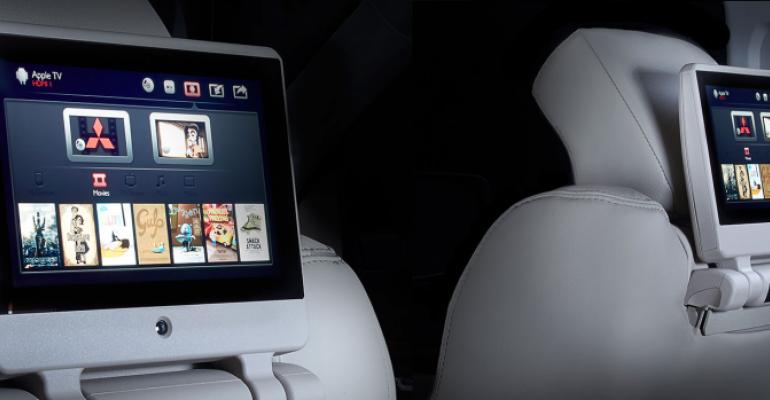NORTHVILLE, MI – Mitsubishi Electric unveils its FLEXConnect infotainment system, which the supplier says is flexible enough to bridge the gap between today’s consumer electronics and those of the future, while creating a better experience for vehicle passengers.
FLEXConnect features two front-seat and two rear-seat touchscreens with cameras that operate as independent units while connected through an Ethernet audio-video bridging architecture.
The system supports Wi-Fi connectivity and can be used with multiple smartphones or tablets, allowing all users’ content to be available in the vehicle.
FLEXConnect offers of a number of features unavailable on today’s infotainment systems, including the ability to access any media on any screen; interactivity between two screens, allowing passengers to play games or send photos back and forth; control of content from the front seat, allowing parents to preview and override rear-seat programming; and cameras installed above each rear-seat screen to allow monitoring of rear occupants.
In the future, Mitsubishi Electric says the system could be upgraded to offer occupant recognition, which would provide each passenger with personalized seat settings, contact lists, device defaults and audio preferences.
“Infotainment has changed quite a bit and we make it more intuitive, like what we’re used to on consumer-electronic devices,” Gareth Williams, strategic technologies manager, audio, video and communications-Mitsubishi Electric, says during a media briefing here. “And with FLEXConnect you can integrate new devices at a rapid pace.”
Williams says automakers need to embrace the changing infotainment environment and Mitsubishi Electric has been demonstrating the technology to top OEMs.
Although the supplier has yet to ink a contract with an automaker, he says they have shown interest, and expects the system to go into production by the ’18 model year.
“We need to get OEMs to embrace the concept and help us get the architecture into vehicles,” Williams says. “It takes a little bit of time, but once you have the architecture set up to do this when the next big (technology) comes, you don’t have to start over.”
Mitsubishi Electric has yet to reveal pricing on the new system, but executives here say it will be competitive with today’s offerings and costs will come down when volume ramps up.
Larger family vehicles make the most sense for FLEXConnect, Williams says, noting the U.S. likely will be the primary market for the technology.
“The North American market makes sense,” he says. “We drive larger cars and have longer roads, so it’s a natural fit for this market. We can imagine hundreds of thousands of vehicles using this.”





